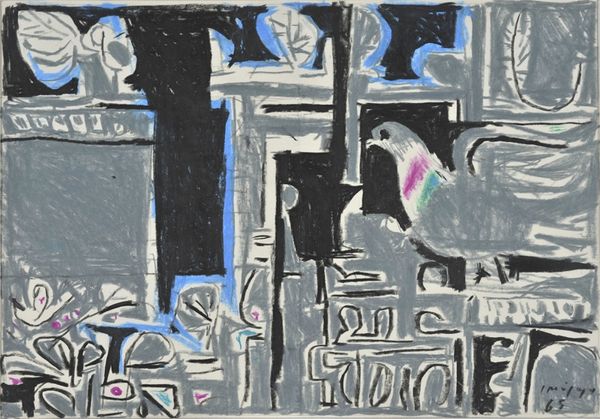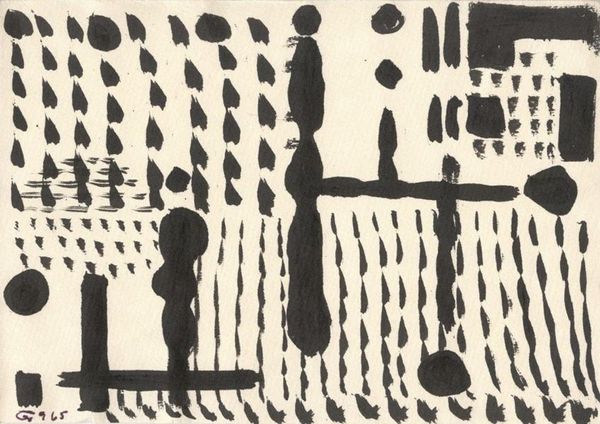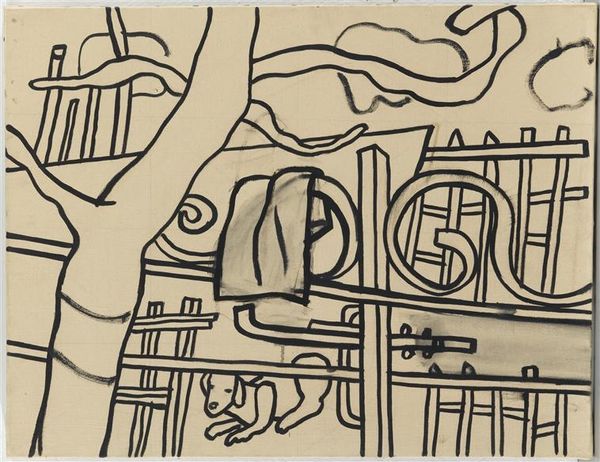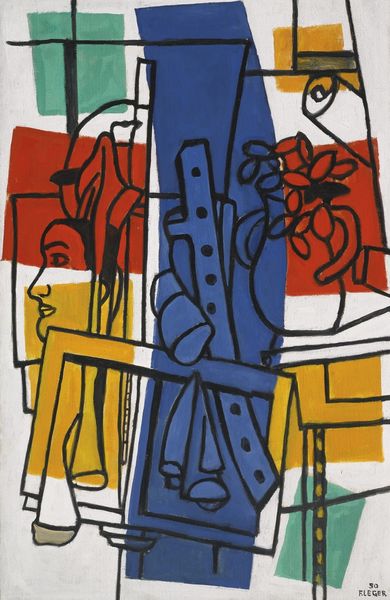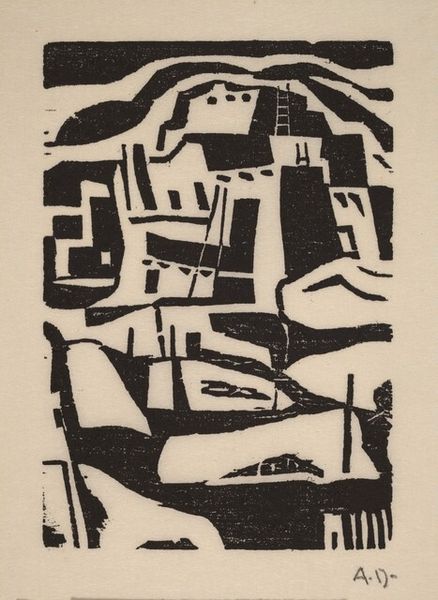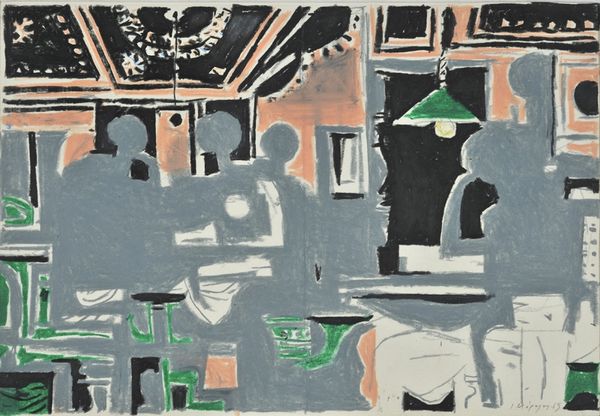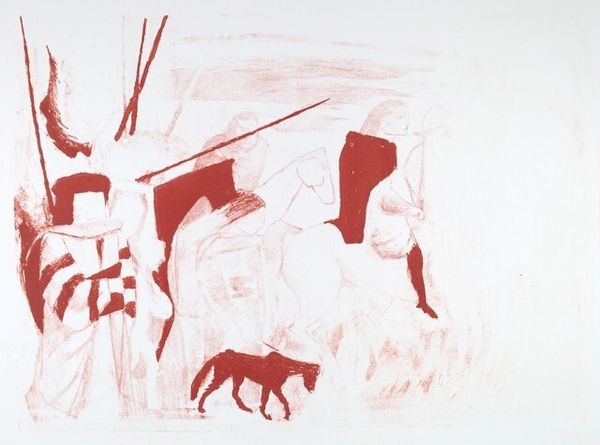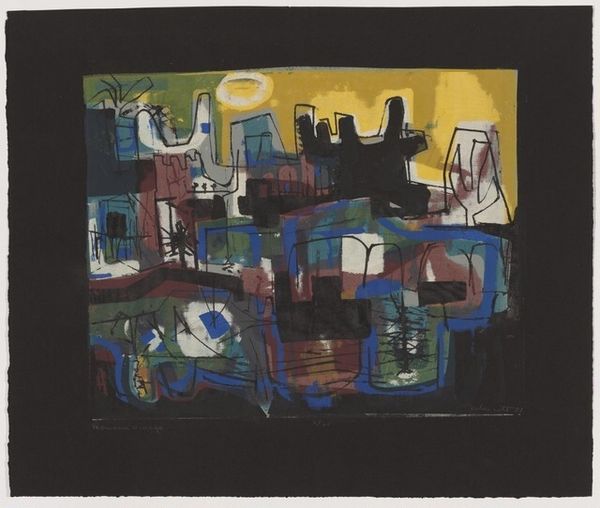
drawing
#
word art style
#
drawing
#
linocut
#
hand drawn type
#
junji ito style
#
linocut print
#
ink drawing experimentation
#
sketchbook drawing
#
cartoon style
#
sketchbook art
#
doodle art
Dimensions: 11 1/8 x 19 1/8 in. (28.26 x 48.58 cm) (sheet)
Copyright: No Copyright - United States
‘A line is a dot that went for a walk.’ – Paul Klee 🖌️ What are your first impressions of this painting? Personally, the work instantly reminds me of prehistoric cave paintings, which date back between 40,000 and 65,000 years. Yet this piece was created in 1938! Paul Klee (1879-1940) painted ‘Animals in an Enclosure’ using water-based gouache on paper. Gouache paint is similar to watercolour, but is much thicker and less transparent. Here, the artist uses thick, streaky lines of aggressive black to suggest the bars of prison cells. This creates an impression of bold intensity. 🎨 Among the oppressive bars, Klee has also painted several animals. He has simplified their forms to the most basic shapes. This move towards childlike, playful shapes is a key feature of Expressionism – a movement which emphasised creativity and emotion over detail or realism. 👶 Klee is best known for his signature style using vibrant colour palettes of contrasting shades. He studied colour theory, which he taught at the famous Bauhaus School. In the late 1930s, around the time of creating this painting, Klee fled from Germany to Switzerland in order to escape Nazi persecution. Several of his artworks were seized and looted under the Nazi regime. How does the knowledge of Klee’s exile to Switzerland change your interpretation of this painting? 👇💭 Editor: Lucy Jude Grantham
Comments
minneapolisinstituteofart almost 2 years ago
⋮
Animals in Enclosure was created during Klee's exile in Switzerland after he was stripped of his professorship at the Düsseldorf Academy by the Nazis in 1933. It employs a labyrinth of aggressive shapes such as bars, arches, forks and arcs to create an imaginary enclosure for several hieroglyphic beasts. The relationship to prehistoric cave paintings and rock sculptures gives this work a sense of mystery and reveals most directly the influence of archaic forms on Klee's art.
Join the conversation
Join millions of artists and users on Artera today and experience the ultimate creative platform.

